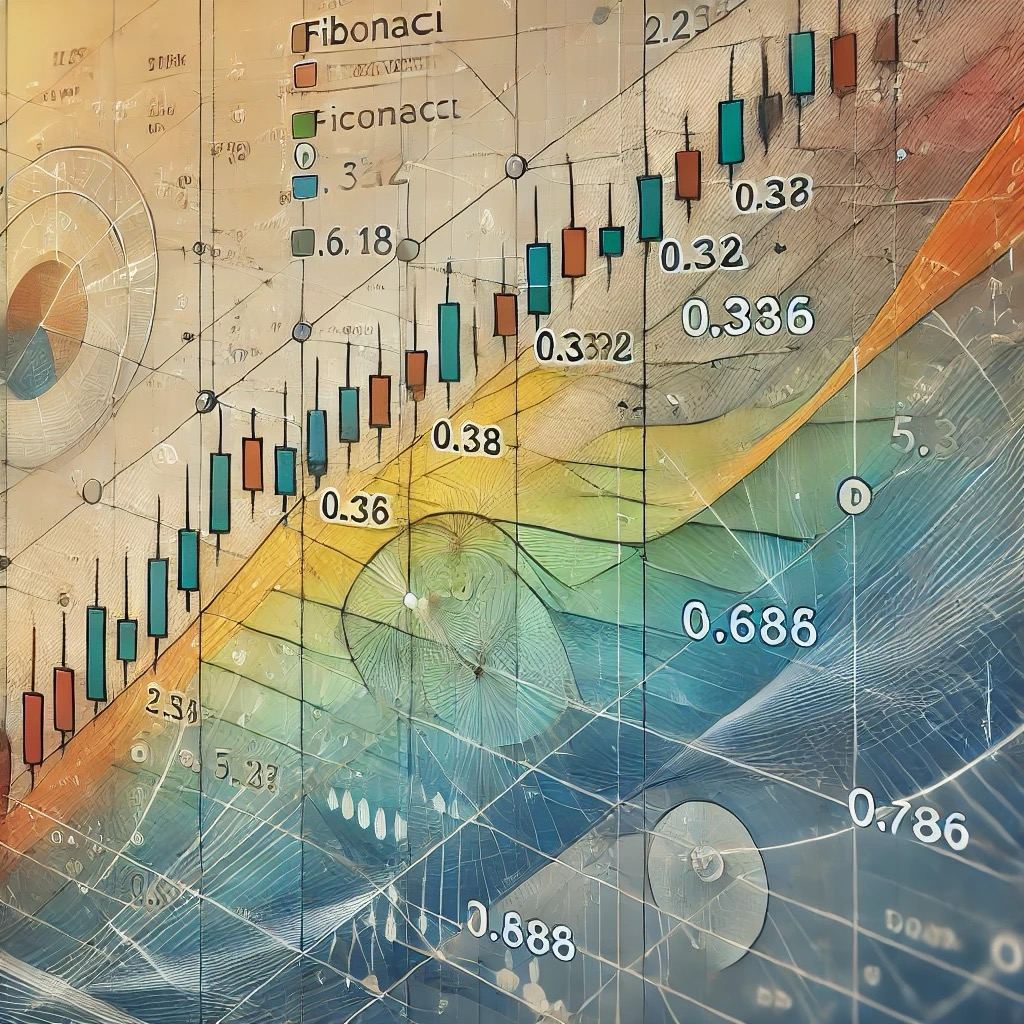Learn Trading for Free and Without Registration
An Online Glossary to Study Trading Independently
Fibonacci Levels

Fibonacci Levels: Key Concepts, Applications, and Analysis
Fibonacci levels are an essential tool in technical analysis, widely used not only to forecast the depth of corrections but also in complex wave models based on specific ratios. These levels rely on the golden ratio, allowing traders to derive multiple derived values through arithmetic transformations. Let’s explore the key Fibonacci levels in trading, their importance in retracements, and how to use them effectively.
What Are Fibonacci Levels?
Fibonacci levels are a standard analytical tool available in most trading platforms. Their popularity is primarily attributed to Ralph Nelson Elliott, the creator of wave theory, who identified certain patterns in market fluctuations. Over more than half a century, Fibonacci levels have proven their effectiveness and have become a cornerstone of many trading strategies.
To use Fibonacci levels, traders select a starting point at the beginning of a trend and extend the tool to the expected end of the movement. This action creates horizontal lines that represent key retracement percentages of the overall price movement. These levels help identify potential areas where price may pause or reverse.
The Significance of Fibonacci Levels
Trends tend to persist, particularly when they’ve lasted for a long time. This principle applies to corrections as well: the deeper the retracement, the higher the likelihood of a new trend forming. Fibonacci levels are divided into shallow and deep retracements, with commonly used levels indicating key reversal points.
Shallow Retracements
-
14.6%
This level often serves as a starting point for a new wave in short-term price movements. It is commonly observed in day trading, indicating minor pullbacks. -
23.6%
This level marks the beginning of a significant retracement while still maintaining a high probability of trend continuation. Its breakout or bounce provides useful entry signals. -
38.2%
A critical level derived from the golden ratio, 38.2% is significant across all timeframes, as price rarely breaks it without pausing.
Deep Retracements
-
50%
While not a Fibonacci number, this level holds psychological importance, marking the midpoint of the price movement. -
61.8%
Known as the “golden ratio,” this level is considered the last line of defense. It often attracts significant buy or sell orders, resulting in notable price reactions and potential reversals. -
76.4% and 85.6%
These levels indicate the likelihood of horizontal corrections or sharp reversals, offering signals for strategic long-term entries.
How to Use Fibonacci Levels in Trading
Trend Trading
Fibonacci levels are highly effective for identifying accumulation zones within a trend. Positions are opened at each retracement level except for the deepest ones, where a trend reversal becomes more likely.
Correction Trading
In corrective movements, traders often wait for confirmation via zigzag or flat patterns. Focus is placed on the range between 38.2% and 61.8%, where reversals or price pauses are more probable.
Advantages of Fibonacci Levels
- Ease of Use: Fibonacci levels are intuitive and easy to apply on charts, making them accessible to traders of all experience levels.
- Versatility: These levels are effective across various markets, including forex, stocks, cryptocurrencies, and commodities.
- Complementary Nature: They work well with other tools like trendlines, indicators, and candlestick patterns, enhancing forecasting accuracy.
Limitations and Risks
While Fibonacci levels are a powerful tool, they should not be used in isolation. They don’t always provide precise signals, especially in strong trends or highly volatile market conditions. Additionally, Fibonacci levels indicate probabilities, not certainties.
Conclusion
Fibonacci levels are a versatile tool that helps traders analyze the market, forecast retracements, and identify entry and exit points. However, their use requires a thoughtful approach and sound risk management. The best results are achieved by combining Fibonacci levels with other technical analysis methods.
This tool remains one of the most effective ways to analyze price movements, maintaining its relevance even after decades of use.


